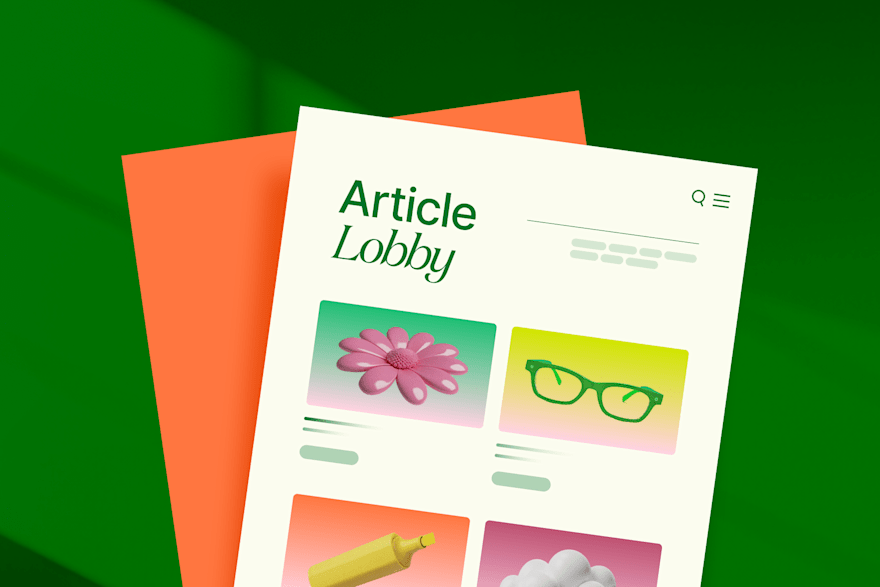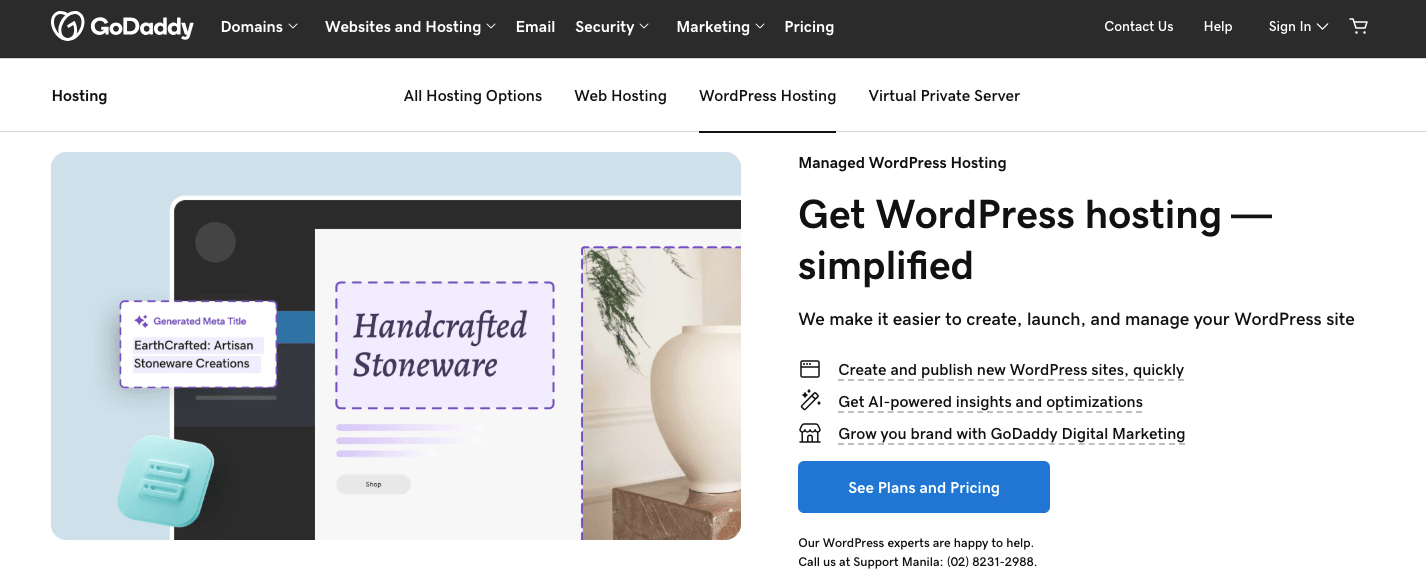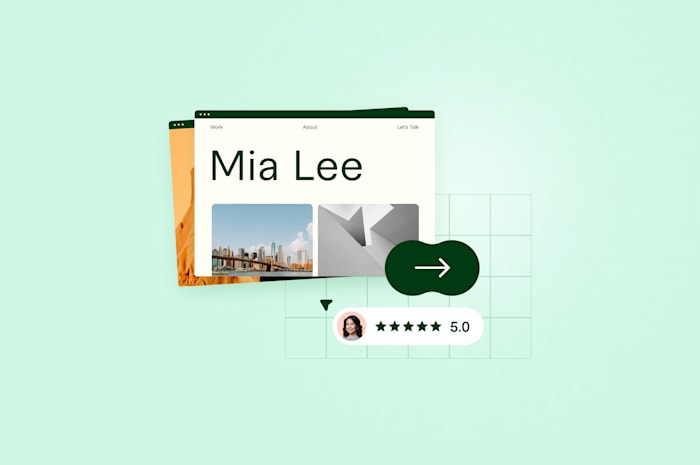How to Start a Successful Blog in 2025: 8 Essential Steps for Beginners
Discover the steps to launch a blog that attracts readers and generates income.
 April 30, 2025
April 30, 2025 8 minute reading
8 minute reading
There are currently close to 2 billion websites, and more than 600 million are blogs. The wild part? Blogs remain incredibly popular, with 83% of online users reading them regularly.
These figures highlight how blogs are still powerful platforms to discuss ideas, provide value, and share information. If you were looking for a sign to begin your blog, this might just be the push you need.
That said, many people are inspired to learn how to start a blog, but with factors like SEO, linking, content writing, planning, and promoting your page going into the mix, it’s also easy to feel overwhelmed by it.
This guide will simplify the blog creation process, covering niche selection, setup, SEO best practices, monetization, and outsourcing.
How to start a blog for beginners in 7 steps
Here’s a simple, step-by-step guide for every beginner who wants to start a blog in 2025.
Step 1: Choose a blog niche and name
Every blog has a niche or a key area of focus. For example, you could write about wedding fashion instead of focusing on fashion. Or, if you’re passionate about food, you might decide to start a food blog. Choosing your blog’s niche and name is the cornerstone of your success strategy because it would dictate your content, branding, and online persona.
Why does your niche matter in 2025?
In December 2022, Google updated its Quality Rater Guidelines, introducing an additional 'E' to the E-A-T acronym, now standing for Experience, Expertise, Authoritativeness, and Trustworthiness (E-E-A-T). This means that Google prioritizes content that demonstrates genuine experience so that users receive more accurate information and guidance.
What are the top niches of 2025?
Here’s a look at the most popular niches this year:
Artificial intelligence (AI): AI is being integrated into various industries, so new content exploring AI applications, ethics, and future developments will likely drive more traffic.
Personal branding: As the gig economy grows, more people want to learn how to join it.
Finance: Topics like personal finance, investing, and cryptocurrency continue to attract readers who want to be more financially literate.
Sustainability: With growing environmental awareness, content on sustainable living practices and eco-friendly products attracts more audiences.
Digital marketing: With many businesses moving online, insights into SEO, social media strategies, and online advertising are hot topics.
Building your brand using one of these niches is a good way to create a stable online presence. You can establish authority and attract a loyal audience by writing in one of these niches.
How to find the right niche for you
To choose your niche, use the “passion + profitability” formula. Striking the perfect balance will help you monetize your blog while ensuring you're genuinely interested in the content you’re creating.
For example, if you’re passionate about life tips, slice-of-life, day-to-day routines, and the like, you might consider launching a lifestyle blog. However, you can back this up with research by searching through Google Trends, conducting a competitor analysis, and researching affiliate programs within the niche. Ensure your blog focuses on a specific topic aligning with your interests and market demand.
Choosing a name and solidifying your branding
Your blog's name is the first impression readers get, so it should be memorable, SEO-friendly, and easy to spell.
AI tools like Namelix and Looka can generate creative, on-brand name suggestions based on keywords and style preferences if you're struggling with ideas.
Once you’ve settled on a name, solidify your branding with a professional logo and a visual brand identity.
If you’re not a designer, consider hiring logo design and branding experts on Fiverr to create a visual identity that aligns with your brand vision.
Step 2: Select a blogging platform
Choosing the right blogging platform is a crucial step in setting up your blog for long-term success. The platform you select will determine how much control you have over your content, your ability to scale, and your options for monetization.
Here’s a breakdown of the top blogging platforms for 2025.
Hiring an expert can save you time and effort if you choose WordPress.com but want a hassle-free setup. WordPress development on Fiverr can help with installation, theme customization, and WordPress plugin setup. This will make sure your blog is optimized from day one.
Find a Blog Writer for Hire
Step 3: Secure a website domain and hosting
Once you’ve chosen your blog’s niche and platform, securing a domain name and reliable hosting is the next step. These two elements form the foundation of your website. They affect everything from your brand credibility to site speed and SEO performance.
Choosing the right domain
Your free domain name is your blog’s online address. A .com domain is still the gold standard for credibility, but niche-specific (top-level domains) TLDs like .ai, .tech, or .blog can work well if they align with your content. Keep your domain short, easy to spell, and free of hyphens to make it more memorable and easier to find online.

GoDaddy
Use trusted registrars like Namecheap, GoDaddy, or Squarespace Domains when purchasing a domain. These providers have competitive pricing, security features, and custom domain management tools to help you get started quickly.
Selecting a hosting platform
The quality of your hosting company directly affects how fast your blog loads and how often it experiences downtime. Some of the top hosting platforms chosen by bloggers are:
SiteGround: Best for beginners who need solid support but want a high-performing hosting provider.
Bluehost: Affordable and WordPress-recommended, this platform’s great for new bloggers.
Kinsta: This platform has high-speed performance and cloud-based hosting.
You can choose between a self-hosting plan (which means managing everything yourself) or managed hosting, where providers handle security, updates, and backups for you. Setting up hosting can be tricky, especially for beginners. If you want expert guidance, consider working with a Fiverr web hosting expert to handle the technical side of things.
Step 4: Design your blog
Blog design combines functionality and user experience while encouraging conversions. According to Hostinger, 94% of all first impressions of a website are influenced by its design. Keeping things clean and intuitive will likely keep visitors engaged and spending more time on the page.
Hostinger also found that poor design and content cause 38% of visitors to click away from a site. There are three factors you should consider when choosing the theme of your blog:
Lightweight: Uses minimal code and resources to keep performance smooth and efficient.
Mobile-friendly: Designed to work well on mobile devices with readable text and easy navigation.
Fast-loading: Reduces load times to improve user experience and keep visitors engaged.
A website with all three qualities is more likely to capture and retain your audience’s interest. Additionally, consider using AI-powered personalization tools that adjust your website’s layout based on user behavior.
Blog elements you need
Every blog (regardless of niche) should have a:
Home page: A main landing page that showcases the brand and top content.
About page: Introduction page where you talk about your mission and vision.
Contact page: Space to show audiences and potential clients how to reach you.
Blog page: Main hub where your readers can access all your new posts and content.
Make sure to also add personalized, strategic call-to-action (CTA) buttons throughout your blog and content to grow your audience.
Newsletter sign-up forms, freebie offers, and social media follow buttons should be placed in high-visibility areas like the sidebar, header, and blog posts.
Step 5: Write your first blog posts
Your posts are the lifeblood of your blog. Launching your website with content already in it will set the foundation for long-term success.
According to ClearVoice, you should have 10 to 15 posts ready to go so audiences can already start browsing and reading on your page. This helps demonstrate your expertise and gives the search engines something to crawl and rank.
You can include tutorial-style posts, listicles, and case studies to provide valuable content to your audience.
Finding the balance between AI and human writing
Perhaps one of the most controversial topics in blogging is the use of AI in content writing and content marketing. AI is meant to be a tool to make workflows more efficient while still maintaining human creativity.
AI, for example, can assist with generating ideas, outlining blog content, and researching keywords. However, human writers can create genuine, insightful, and experience-backed content that connects with readers. Working with Fiverr Pro writers, Google Analytics experts, and virtual assistants can help streamline your content creation process.
Google’s E-E-A-T framework serves as an excellent guide for writing articles because it prioritizes human insights and expertise. This will help your content rank higher on SERPs.
Making your own blog posts stand out in 2025
To make an impact with your content, ensure your blog posts:
Follow Google’s E-E-A-T (Experience, Expertise, Authoritativeness, and Trustworthiness) framework to demonstrate experience and expertise.
Are SEO-driven to match keywords and questions that people are searching for.
Offer unique insights that are backed by data and experience.
Are easily readable and digestible by using short paragraphs, subheadings, and engaging storytelling.
If writing isn’t your strength or you want to scale quickly, hiring professional writers can help. Outsource repetitive tasks or research-heavy content while keeping personal storytelling and niche expertise in-house. Work with SEO blog writers and ghostwriters on Fiverr to make sure your blog goes live with engaging, well-written posts that rank and convert.
Step 6: Implement basic SEO
An SEO (search engine optimization) strategy involves making sure your intended audience can find your content and ranks high on search engines. Google prioritizes long-form, in-depth content that is supported by high-traffic keywords related to your blog topic. While purely AI-generated content is becoming more common, steer clear because it may hurt your Google rankings.
Start with on-page SEO, which includes keyword research and optimization, structuring content with internal links, and ensuring mobile-friendly usability for better rankings. Next, focus on technical SEO, optimizing page speed, Core Web Vitals, and schema markup to improve site performance and visibility. Finally, off-page SEO plays a key role in building authority because this involves earning backlinks from reputable websites, guest posting, and content promotion.
If you're new to SEO, you can use tools like Yoast and Surfer to optimize your content. Alternatively, you can hire an SEO specialist on Fiverr for expert guidance and to ensure your blog is fully optimized for search engines.
Hire an SEO expert on Fiverr
Step 7: Promote your blog
Once your blog is live, driving traffic is essential for growth. The best promotion strategies in 2025 focus on SEO, social media, forums, podcasts, and email newsletters to build an engaged target audience.
SEO-driven traffic remains the most sustainable way to attract visitors. By optimizing for high-intent keywords and improving site authority, you can generate organic traffic that grows over time.
Meanwhile, social media repurposing helps extend your blog’s reach. Turning blog posts into TikTok videos, LinkedIn articles, or X posts makes your content relevant across multiple platforms. Lastly, email marketing remains a powerful tool for audience building because it keeps you directly engaged with your audience. Build your email list with high-quality leads for the best results.
Pexels
Using AI to promote your blog
AI-powered tools can automate social media scheduling, analyze the best posting times, and personalize email campaigns to improve engagement. These tools save time while helping you with consistent promotion across platforms.
For expert assistance, work with a social media marketing or email marketing experts on Fiverr to build and manage your audience online.
How to monetize your blog
Making money from your blog is possible if you take the right approach. It could either be a profitable side hustle or a full-time job. The best way to go about it is to start with methods that are easy to implement and scale over time.
One of the simplest ways to earn money is through affiliate marketing (recommending products through programs like Amazon Associates or ShareASale). When someone makes a purchase, you get a commission. If you build an engaged audience, you can look into sponsored content. This can be another source of income because brands would pay to be featured on your page.
Another way to make money blogging is by selling digital products like ebooks, templates, or online courses that allow you to keep all the profits. Finally, ad networks like Google AdSense or Mediavine give you passive income based on your blog traffic.
When should you start monetizing?
There’s no magic number, but most bloggers wait until they have at least 5,000 to 10,000 monthly visitors before focusing heavily on monetization. Keep in mind that not all content will generate income. Typically, a handful of well-optimized posts will drive most of your earnings and help you make money through blogging. Consider working with an ad monetization strategist on Fiverr to help you hit your monetization goals quickly.
Find a blog writer for hire
Work with writers and editors from Fiverr
By following the seven steps above for starting a blog, you can set yourself up for long-term success in blogging. However, having the right support can make all the difference, and equipping yourself with the right tools and know-how will help you confidently launch your blog.
Instead of figuring everything out on your own, consider collaborating with expert freelancers on Fiverr who can help you with everything from SEO and content writing to web design and digital marketing. Start your blogging journey today with expert support from Fiverr.
[Find expert freelancers on Fiverr who can help you create, design, optimize, and prompt your blog]
FAQs about starting a blog
How do bloggers get paid?
You can earn money through blogging in various ways. Bloggers can monetize blogs through ad revenue, sponsored content, affiliate marketing, and selling their own digital/physical products or services on their blogs.
How can I start a blog for free?
You can start a blog on free blog platforms like Blogger or Medium. These platforms offer easy-to-use tools for setting up your blog. And with their built-in audiences, you can start reaching readers right away,
How do I start blogging as a beginner?
Start by choosing your blog niche and setting up your website. Then, write valuable content and add at least 10 posts to your new blog. Lastly, promote it through SEO and social media to reach new audiences.
What is the 80/20 rule for blogging?
About 20% of your content will generate 80% of your traffic and income. To make the most of this, focus on creating and nurturing high-impact posts that deliver the most value to your readers.





